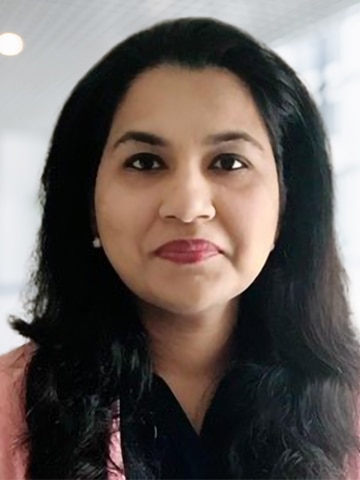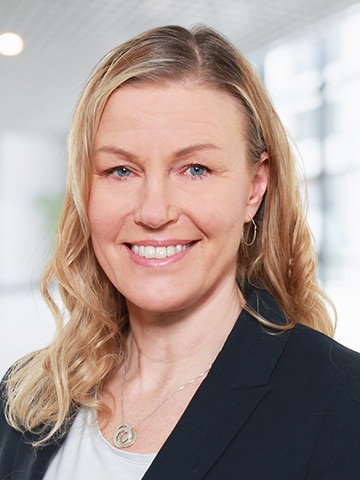CGI Women in Banking is a roundtable series that brings together female banking experts from across CGI to discuss key financial topics. In this roundtable interview, we explore the concept of future-proofing—the process of anticipating the future and developing strategies that minimize risks and maximize opportunities. Is futureproofing a realistic goal for banks or more of a theoretical concept? CGI experts Nancy Amert, Yvette Van Esch, Verónica Filipe, Satu Kiiski, and Sridevi Nair share their perspectives.
Why is it relevant to talk about future-proofing?
Nancy:
 Future-proofing, to me, means staying ahead of the curve, which isn’t an easy thing to do. It means rolling up your sleeves and digging into the hard, factual research related to technology and macro and micro socio-economic trends. It means staying flexible and nimble enough to be ready to pivot, if necessary. Plus, because things are changing rapidly given the pandemic, war in Ukraine, climate crisis, etc., the world is increasingly volatile. So, staying on top of the latest trends and transformational shifts is more critical than ever before. As head of CGI’s Trade Innovation Lab, one of my mandates is to future-proof CGI Trade360, which includes both a trade platform and portal. There is no way to understate the importance of this.
Future-proofing, to me, means staying ahead of the curve, which isn’t an easy thing to do. It means rolling up your sleeves and digging into the hard, factual research related to technology and macro and micro socio-economic trends. It means staying flexible and nimble enough to be ready to pivot, if necessary. Plus, because things are changing rapidly given the pandemic, war in Ukraine, climate crisis, etc., the world is increasingly volatile. So, staying on top of the latest trends and transformational shifts is more critical than ever before. As head of CGI’s Trade Innovation Lab, one of my mandates is to future-proof CGI Trade360, which includes both a trade platform and portal. There is no way to understate the importance of this.
It’s a huge responsibility.
Sridevi:
 Banking is witnessing unprecedented competition as a result of new digital entrants and emerging technologies. It’s also experiencing rapid transformation driven by increased automation through artificial intelligence and machine learning. It’s challenging for banks to deliver a differentiated, cutting-edge customer experience. This is where future-proofing comes into play. Winning customers today doesn’t guarantee success in the next two to five years unless the right strategies are in place to tackle changing market conditions. Future-proofing is all about understanding and accommodating customer needs today and in the years to come.
Banking is witnessing unprecedented competition as a result of new digital entrants and emerging technologies. It’s also experiencing rapid transformation driven by increased automation through artificial intelligence and machine learning. It’s challenging for banks to deliver a differentiated, cutting-edge customer experience. This is where future-proofing comes into play. Winning customers today doesn’t guarantee success in the next two to five years unless the right strategies are in place to tackle changing market conditions. Future-proofing is all about understanding and accommodating customer needs today and in the years to come.
Satu:
 Banks no longer compete with other banks only, but instead a range of new players that have entered the banking space and are now delivering financial services. Open banking has accelerated this trend by giving these new players access to customer banking data, which they can then use to develop new value-added services. This trend already is changing how banks do business and, without question, will shape the future of banking. To remain competitive, banks are challenged to anticipate not only future customer demand and the progress of their banking peers, but also the capabilities of these new players.
Banks no longer compete with other banks only, but instead a range of new players that have entered the banking space and are now delivering financial services. Open banking has accelerated this trend by giving these new players access to customer banking data, which they can then use to develop new value-added services. This trend already is changing how banks do business and, without question, will shape the future of banking. To remain competitive, banks are challenged to anticipate not only future customer demand and the progress of their banking peers, but also the capabilities of these new players.
Verónica:
 It’s always important to anticipate market changes. Digital transformation, for example, is advancing at great strides across all areas of business, giving organizations that embrace it a competitive edge. To stand out in the market—now and into the future—banks must be willing to look into the future, invest in innovation, deliver new services, and embrace more modern ways of doing business. Anticipating the future needs of customers is essential for future success. Further, simulating future issues enables banks to think about various options and make the best decisions.
It’s always important to anticipate market changes. Digital transformation, for example, is advancing at great strides across all areas of business, giving organizations that embrace it a competitive edge. To stand out in the market—now and into the future—banks must be willing to look into the future, invest in innovation, deliver new services, and embrace more modern ways of doing business. Anticipating the future needs of customers is essential for future success. Further, simulating future issues enables banks to think about various options and make the best decisions.
Yvette:
 We can’t predict the future, as we have realized over the past two years, but we can do our best to both anticipate and learn from future possibilities. Future-proofing is essential to preparing for what lies ahead—whether in banking or any other industry. Banks that invest in future-proofing are better positioned to face future challenges and capitalize on future opportunities.
We can’t predict the future, as we have realized over the past two years, but we can do our best to both anticipate and learn from future possibilities. Future-proofing is essential to preparing for what lies ahead—whether in banking or any other industry. Banks that invest in future-proofing are better positioned to face future challenges and capitalize on future opportunities.




